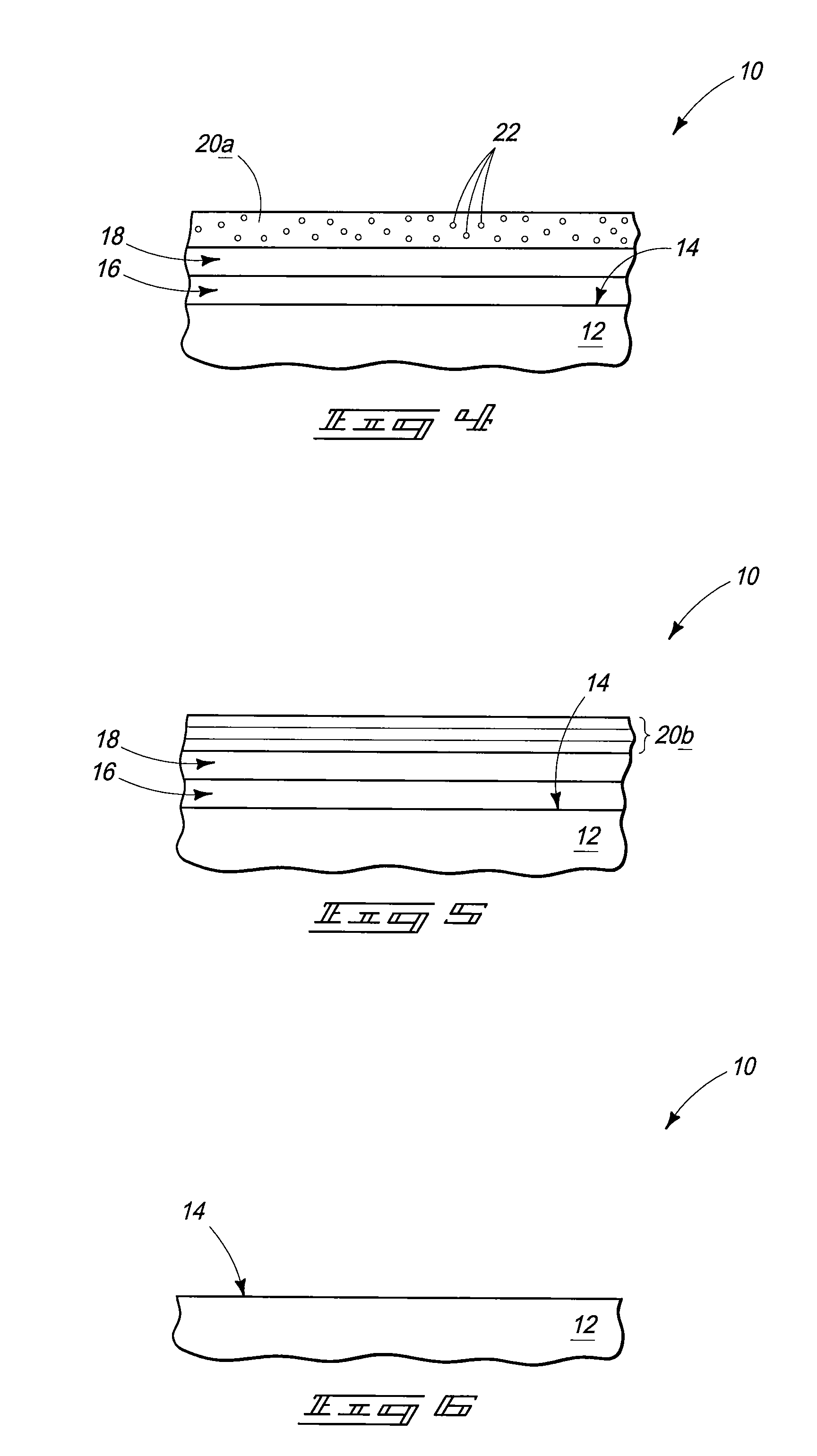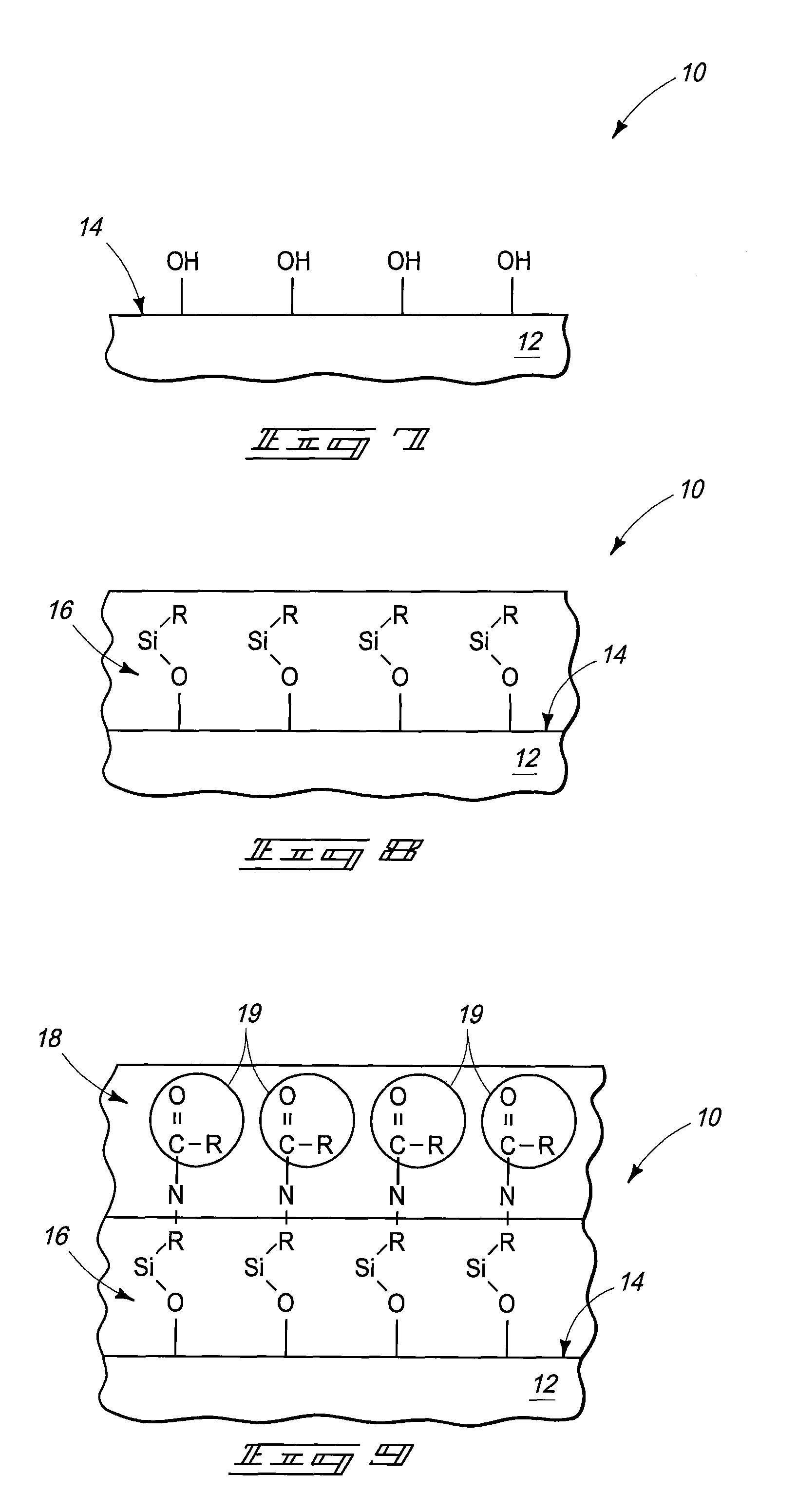Medical implants and methods of making medical implants
a technology of medical implants and stents, applied in the field of medical implants and methods of making medical implants, can solve problems such as allergic reactions, triggering blood clot formation, and negative effects which can even be life-threatening
- Summary
- Abstract
- Description
- Claims
- Application Information
AI Technical Summary
Benefits of technology
Problems solved by technology
Method used
Image
Examples
Embodiment Construction
[0028]This disclosure of the invention is submitted in furtherance of the constitutional purposes of the U.S. Patent Laws “to promote the progress of science and useful arts” (Article 1, Section 8).
[0029]Medical implant devices are common in modern medicine in the treatment of a wide variety of conditions. However, implants can trigger biological problems and have side effects such as rejection of the device, allergic reaction and blood clot formation that can lead to thrombosis.
[0030]Modern implants include, for example, catheters, electrodes, stents, leads, pacemakers, cardioverter or defibrillator housings, artificial joints, screws, rods, ophthalmic implants, pins, bone plates, grafts, anastomotic devices, perivascular wraps, staples, shunts, dialysis grafts, colostomy bag attachment devices, ear drainage tubes, vertebral disks, suture anchors, hemostatic barriers, clamps, plates, clips, vascular implants, tissue scaffolds, dressings, bone substitutes, intraluminal devices and v...
PUM
| Property | Measurement | Unit |
|---|---|---|
| particle size | aaaaa | aaaaa |
| bioactive | aaaaa | aaaaa |
| bio-absorbable | aaaaa | aaaaa |
Abstract
Description
Claims
Application Information
 Login to View More
Login to View More - R&D
- Intellectual Property
- Life Sciences
- Materials
- Tech Scout
- Unparalleled Data Quality
- Higher Quality Content
- 60% Fewer Hallucinations
Browse by: Latest US Patents, China's latest patents, Technical Efficacy Thesaurus, Application Domain, Technology Topic, Popular Technical Reports.
© 2025 PatSnap. All rights reserved.Legal|Privacy policy|Modern Slavery Act Transparency Statement|Sitemap|About US| Contact US: help@patsnap.com



